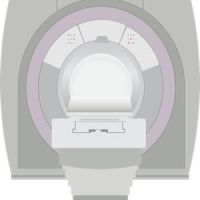According to new findings from the Clinical Evaluation of Magnetic Resonance Imaging in Coronary Heart Disease 2 (CE-MARC 2) trial presented at the ESC Congress 2016, initial investigation of patients with suspected coronary heart disease (CHD) using functional imaging as compared to guideline-directed care resulted in significantly less unnecessary angiography. The findings are also published in JAMA.
Lead investigator John Greenwood, PhD, from the
University of Leeds points out that the rates of invasive angiography are very high among patients with suspected CHD. Findings from this study show that both cardiovascular magnetic resonance (CMR)
and myocardial perfusion scintigraphy (MPS) significantly reduced rates
of unnecessary angiography compared to guideline-directed care. There were no major adverse cardiovascular events (MACE) either thus suggesting that functional imaging can be used on a wider basis, even in high-risk patients.
The study included 1,202 patients with suspected
CHD from six UK centers who were randomised to functional imaging-based investigation with either CMR or MPS or to guideline-directed investigation based on NICE guidelines.
Patients at low risk for CHD were scheduled for cardiac computed tomography (CCT); those at intermediate risk were scheduled for MPS and those at high risk were sent for coronary angiography. Primary end point was unnecessary coronary angiography within 12 months with secondary end points of MACE, and positive angiography within this same time period.
22 percent of the overall study population underwent coronary angiography within the 12 months. Unnecessary angiography occurred in 28.8 percent of the NICE guidelines group, 7.5 percent of the CMR group and 7.1 percent of the MPS group. No difference was observed in short-term MACE or positive angiography rates within the three strategies.
Prof. Greenwood concluded that “these results show that a broader use of functional imaging (CMR or MPS), in low, intermediate and high risk patient groups, could reduce the rates of invasive angiography that ultimately show no obstructive coronary disease. In addition, CE-MARC and CE-MARC 2 further support the role of CMR as an alternative to MPS for the diagnosis and management of patients with suspected CHD.”
Source: ESC
Image Credit: Wikimedia Commons

























